![Brotzmann / Van Hove / Bennink / Albert Mangelsdorff: Outspan No 1 [VINYL] (Cien Fuegos) Brotzmann / Van Hove / Bennink / Albert Mangelsdorff: Outspan No 1 [VINYL] (Cien Fuegos)](https://www.teuthida.com/productImages/misc4/33753.jpg)
Recorded a month after Outspan No 1, this album was captured live at 1974 Ost-West-Festival in Nurnberg, Germany from the legendary, masterfully amusing and absolutely serious trio of Peter Brötzmann on alto saxophone, tenor saxophone & clarinet, Fred Van Hove on piano, and Han Bennink on drums, clarinet, homemade junk, everything & anything.
Out of Stock
Quantity in Basket: None
Log In to use our Wish List
Shipping Weight: 24.00 units
Sample The Album:
Peter Brotzmann-alto saxophone, baritone saxophone, clarinet
Fred Van Hove-piano
Han Bennink-drums, selfmade clarinet, homemade junk, voice
Albert Mangelsdorff-trombone
Click an artist name above to see in-stock items for that artist.
UPC: 9120036683785
Label: Cien Fuegos
Catalog ID: CF 029LP
Squidco Product Code: 33753
Format: LP
Condition: New
Released: 2023
Country: Austria
Packaging: LP
Recorded live during the Workshop Freie Musik at the Akademie der Kunste in Berlin, Germany, on April 14th and 15th, 1974, by Jurgen Lindenau.
Originally released in 1975 as a vinyl LP on the FMP label with catalog code FMP 0180.
"It's hard to imagine how this record -- and it's mate, Outspan No 2 -- managed to remain more or less out of circulation from the CD era onward. Outspan No 1 is nothing less than an ideal distillation of the broad approach to sound creation utilized by the three-ring circus that is Brotzmann, Van Hove, and Bennink, here with the added bonus of Mangelsdorff. Two short numbers, two long, too perfect."-Cien Fuegos
Artist Biographies
• Show Bio for Peter Brotzmann "Born Remscheid, Germany on 6 March 1941; soprano, alto, tenor, baritone and bass saxophones, a-clarinet, e-flat clarinet; bass clarinet, tarogato. Peter Brötzmann's early interest was in painting and he attended the art academy in Wuppertal. Being very dissatisfied with the gallery/exhibition situation in art he found greater satisfaction playing with semi-professional musicians, though continued to paint (as well as retaining a level of control over his own records, particularly in record sleeve/CD booklet design). In late 2005 he had a major retrospective exhibition jointly with Han Bennink - two separate buildings separated by an inter-connecting glass corridor - in Brötzmann's home town of Remscheid. Self-taught on clarinets, he soon moved to saxophones and began playing swing/bebop, before meeting Peter Kowald. During 1962/63 Brötzmann, Kowald and various drummers played regularly - Mingus, Ornette Coleman, etc. - while experiencing freedoms from a different perspective via Stockhausen, Nam June Paik, David Tudor and John Cage. In the mid 1960s, he played with American musicians such as Don Cherry and Steve Lacy and, following a sojourn in Paris with Don Cherry, returned to Germany for his unorthodox approach to be accepted by local musicians like Alex von Schlippenbach and Manfred Schoof. The trio of Peter Brötzmann, Peter Kowald and Sven-Ake Johansson began playing in 1965/66 and it was a combination of this and the Schoof/Schlippenbach Quintet that gave rise to the first Globe Unity Orchestra. Following the self-production of his first two LPs, For Adolphe Sax and Machine gun for his private label, BRÖ, a recording for Manfred Eicher's 'Jazz by Post' (JAPO) [Nipples], and a number of concert recordings with different sized groups, Brötzmann worked with Jost Gebers and started the FMP label. He also began to work more regularly with Dutch musicians, forming a trio briefly with Willem Breuker and Han Bennink before the long-lasting group with Han Bennink and Fred Van Hove. As a trio, and augmented with other musicians who could stand the pace (e.g. Albert Mangelsdorff on, for example, The Berlin concert), this lasted until the mid-1970s though Brötzmann and Bennink continued to play and record as a duo, and in other combinations, after this time. A group with Harry Miller and Louis Moholo continued the trio format though was cut short by Miller's early death. The thirty-plus years of playing and recording free jazz and improvised music have produced, even on just recorded evidence, a list of associates and one-off combinations that include just about all the major figures in this genre: Derek Bailey (including performances with Company (e.g. Incus 51), Cecil Taylor, Fred Hopkins, Rashied Ali, Evan Parker, Keiji Haino, Misha Mengelberg, Anthony Braxton, Marilyn Crispell, Andrew Cyrille, Phil Minton, Alfred 23 Harth, Tony Oxley. Always characterised as an energy player - and the power-rock setting of Last Exit with Ronald Shannon Jackson, Sonny Sharock and Bill Laswell, or his duo performances with his son, Casper, did little to disperse this conviction - his sound is one of the most distinctive, life-affirming and joyous in all music. But the variety of Brötzmann's playing and projects is less recognised: his range of solo performances; his medium-to-large groups and, in spite of much ad hoc work, a stability brought about from a corpus of like- minded musicians: the group Ruf der Heimat; pianist Borah Bergman; percussionist Hamid Drake; and Die like a dog, his continuing tribute to Albert Ayler, with Drake, William Parker and Toshinori Kondo. Peter Brötzmann continues a heavy touring schedule which, since 1996 has seen annual visits to Japan and semi-annual visits to the thriving Chicago scene where he has played in various combinations from solo through duo (including one, in 1997, with Mats Gustafsson) to large groups such as the Chicago Octet/Tentet, described below. He has also released a number of CDs on the Chicago-based Okka Disk label, including the excellent trio with Hamid Drake and the Moroccan Mahmoud Gania, at times sounding like some distant muezzin calling the faithful to become lost in the rhythm and power of the music. The "Chicago Tentet" was first organized by Brötzmann with the assistance of writer/presenter John Corbett in January 1997 as an idea for a one-time octet performance that included Hamid Drake and Michael Zerang (drums), Kent Kessler (bass) and Fred Lomberg-Holm (cello), Ken Vandermark and Mars Williams (reeds), and Jeb Bishop (trombone). The first meeting was extremely strong and warranted making the group an ongoing concern and in September of that same year the band was expanded to include Mats Gustafsson (reeds) and Joe McPhee (brass) as permanent members (with guest appearances by William Parker (bass), Toshinori Kondo (trumpet/electronics), and Roy Campbell (trumpet) during its tenure) - all in all a veritable who's who of the contemporary improvising scene's cutting edge. Though the Tentet is clearly led by Brötzmann and guided by his aesthetics, he has been committed to utilizing the compositions of other members in the ensemble since the beginning. This has allowed the band to explore an large range of structural and improvising tactics: from the conductions of Mats Gustafsson and Fred Lonberg-Holm, to the vamp pieces of Michael Zerang and Hamid Drake, to compositions using conventional notation by Ken Vandermark and Mars Williams, to Brötzmann's graphic scores - the group employs almost every contemporary approach to composing for an improvising unit. This diversity in compositional style, plus the variety in individualistic approaches to improvisation, allows the Tentet to play extremely multifaceted music. As the band moves from piece to piece, it explores intensities that range from spare introspection to all out walls of sound, and rhythms that are open or free from a steady pulse to those of a heavy hitting groove. It is clear that the difficult economics of running a large band hasn't prevented the group from continuing to work together since its first meeting. Through their effort they've been able to develop an ensemble sound and depth of communication hard to find in a band of any size or style currently playing on the contemporary music scene." ^ Hide Bio for Peter Brotzmann • Show Bio for Fred Van Hove Fred Van Hove: "Born 1937 in Antwerp, Belgium; piano, accordion, church organ, composer. Fred Van Hove studied piano, theory and harmony at the Music Academy in Belgium and experimented with several jazz styles and dance music before making the transition to free improvisation with local musicians (Zinzen, Van De Ven and Wanders). He has been a professional free-lance musician since 1964. 1966 saw the beginning of Van Hove's collaboration with Peter Brötzmann, initially in quartet or larger groupings (eg Machine Gun), then stabilising in a trio format (with Han Bennink) for five to six years; in 1995 contact with Brötzmann was renewed when the two played a duo as part of the 'Pool' at the Free Music XXII in Antwerp in August. His first solo concerts were played at the Avant-garde festival Gravensteen, Ghent, in 1970 and Jazz Middleheim, in Antwerp in 1971. In 1972, working as a duo with Belgian sax player Cel Overberghe, he refused to play at the Middelheim festival as a result of a dispute over the grossly differential fees being paid to visiting American musicians on the one hand and European musicians on the other. This dispute led to the foundation of the musicians collective WIM vzw, Werkgroep Improviserende Musici, whose aim was to improve the situation of free music in Belgium. Fred Van Hove has been Chairman of WIM since then. From 1976, and in collaboration with, for example, De Andere Film Antwerp & Ghent, Dommelhof Neerpeilt (Belgium), and Filmhaus Berlin, he has provided solo accompaniment to silent movies, particularly experimental films of the 1920s (Griffiths, Porter, Murnau, Lang, Dreyer, among others) as well as comedies and animations. He has also performed regularly with duo partners who have included: Steve Lacy; Vinko Globokar; Lol Coxhill; Albert Mangelsdorf; Annick Nozati; Phil Wachsmann; André Goodbeek; Paul Van Gyseghem. From the end of the 1970s, Van Hove formed a number of groups utilising the initials MLA (Musica Libera Antverpiae) and MLB (Musica Libera Belgicae) or similar. The first MLA, formed in 1978, was a group of variable composition from a nucleus of seven musicians: three strings; three brass; piano. This undertook several tours and festivals (e.g. at Jazz Middelheim, and London). In 1979, MLA Blek comprised Marc Charig on trumpet and Radu Malfatti and Paul Rutherford on trombones and toured Italy. Formed in 1980, though recorded in 1982, the ML DD 4 consisted of Marc Charig, Phil Wachsmann and Günther 'Baby' Sommer on percussion and toured through several ex-DDR European countries. In 1983, Fred Van Hove was invited to Berlin by the DAAD (Deutscher Akademischer Austauschdienst) as artist in residence for six months, April to October. During this time he took the opportunity to play concerts with MLA, MLA Blek and ML DD 4, but also to play extensively with local musicians in a series of MLBB: Berliner Begegnungen or Berlin Encounters. In the mid-80s, Fred Van Hove undertook several tours of Japan playing solo and duos with a wide variety of musicians including percussionist Sabu Toyozumi, bass player Tetsu Saitoh; and US and European musicians such as: Ned Rothenberg; Douglas Ewart; Peter Kowald; Hans Reichel; Evan Parker; and Barry Guy. A three-day Van Hove festival was held at the concert hall Space Who, Saitama, celebrating its 5th anniversary. The Belgisch Pianokwartet was formed in 1984, four pianists at 2 grands, originally consisting of Walter Hus, Christian Leroy and Eddy Loozen, but more recently with Marilyn Crispell replacing Hus and the group name becoming 't Pianokwartet. The MLB III trio with André Goudbeek, saxophone, and Ivo Vander Borght, percussion was formed around the same time, recorded in 1988 and toured the former DDR (with trumpeter Andy Altenfeldert), Spain and the Netherlands. Since 1988 the trio with the French singer Annick Nozati and the German trombonist Johannes Bauer has recorded and toured and, from 1991, 't Nonet has performed, comprising: Marc Charig or Axel Dörner, trumpet; Annick Nozati, voice; Paul Rutherford and Johannes Bauer, trombones; Benoit Viredaz, tuba, Evan Parker or John Butcher and André Goudbeek, saxophones; and Ivo Vander Borght, percussion. Cooperation with other musicians has included Luc Houtkamp, Connie Bauer and Wolfgang Fuchs. Fred Van Hove has cooperated with poets and painters (the action painter W.J.C. Free) and held seminars and workshops on improvisation in Antwerp, Tilberg, Ghent, Amsterdam, in England and Germany and, since 1990, at Département d'Etudes Musicales, University Lille 3, France. In June 1996 the Belgium government conferred on Fred Van Hove the title of Cultural Ambassador of Flanders 1996, an award that included a grant for touring outside of Belgium." ^ Hide Bio for Fred Van Hove • Show Bio for Han Bennink "Drummer and multi-instrumentalist Han Bennink was born in Zaandam near Amsterdam in 1942. His first percussion instrument was a kitchen chair. Later his father, an orchestra percussionist, supplied him with a more conventional outfit, but Han never lost his taste for coaxing sounds from unlikely objects he finds backstage at concerts. He is still very fond of playing chairs. In Holland in the 1960s, Bennink was quickly recognized as an uncommonly versatile drummer. As a hard swinger in the tradition of his hero Kenny Clarke, he accompanied touring American jazz stars, including Sonny Rollins, Ben Webster, Wes Montgomery, Johnny Griffin, Eric Dolphy and Dexter Gordon. He is heard with Gordon on the 1969 album "Live at Amsterdam Paradiso" (on the Affinity label) and with Dolphy on 1964s "Last Date" (PolyGram). At the same time, Bennink participated in the creation of a European improvised music which began to evolve a new identity, apart from its jazz roots. With fellow Dutch pioneers, pianist Misha Mengelberg and saxophonist Willem Breuker, he founded the musicians collective Instant Composers Pool in 1967. Bennink anchored various bands led by Mengelberg or Breuker, and appeared in their comic music-theater productions. Bennink attended art school in the 1960s, and is also a successful visual artist in several media, often constructing sculpture from found objects, which may include broken drum heads and sticks. He has designed the covers for many LPs and CDs on which he appears. Bennink is represented by Amsterdam's Galerie Espace, and has been the subject of several one-man shows, including one at the Gemeente Museum in the Hague in 1995. In 1966, Bennink played the US's Newport Jazz Festival with the Mengelberg quartet. From the late 1960s through the '70s Bennink collaborated frequently with Danish, German, English and Belgian musicians, notably saxophonists John Tchicai and Peter Broetzmann, guitarist Derek Bailey and pianist Fred van Hove. Bennink, Broetzmann and van Hove had a longstanding trio well documented on FMP Records. There Bennink also showcased his talents on clarinet, trombone, soprano saxophone and many other instruments, also featured in a series of solo albums he began in 1971. Bennink's many recordings from the 1980s include sessions with Mengelberg's ICP Orchestra (where he remains), South African bassist Harry Miller, soprano saxophonist Steve Lacy, trombonists Roswell Rudd and George Lewis, and big-bandleaders Sean Bergin and Andy Sheppard. From 1988 to'98 Bennink's main vehicle was Clusone 3, with saxophonist and clarinetist Michael Moore and cellist Ernst Reijseger, a band noted for its free-wheeling mix of swinging jazz standards, wide-open improvising, and tender ballads. Clusone played Europe and North America, West Africa, China, Vietnam and Australia, and recorded five CDs for Gramavision, hat Art and Ramboy. Nowadays he is frequently heard with tenor saxophonist Tobias Delius's quartet and in a trio with pianist/keyboardist Cor Fuhler and bassist Wilbert de Joode, and he still collaborates occasionally with jazz luminaries such as Johnny Griffin, Von Freeman and Ray Anderson. A conspicuous feature of Bennink's musical life since the 1960s is the spontaneous duo concert with musicians of many nationalities and musical inclinations; in the '90s he recorded in duo with among others pianists Mengelberg, Irene Schweizer and Myra Melford, guitarist Eugene Chadbourne, trumpeter Dave Douglas and tenor saxophonist Ellery Eskelin. Since 2008 Han Bennink has his own Han Bennink Trio consisting of Han Bennink, Joachim Badenhorst on clarinet and Simon Toldam on piano." ^ Hide Bio for Han Bennink • Show Bio for Albert Mangelsdorff "Albert Mangelsdorff (September 5, 1928 in Frankfurt, Germany - July 25, 2005 in Frankfurt) was one of the most accredited and innovative trombonists of modern jazz who became famous for his use of multiphonics.[1] Mangelsdorff was born in Frankfurt. He was given violin lessons as a child and was self-taught on guitar in addition to knowing trombone. His brother, alto saxophonist Emil Mangelsdorff, introduced him to jazz during the Nazi period (a time when it was forbidden in Germany). After the war Mangelsdorff worked as a guitarist and took up trombone in 1948. n the 1950s Mangelsdorff played with the bands of Joe Klimm (1950-53), Hans Koller (1953-54) (featuring Attila Zoller), Jutta Hipp (1954-55), as well as with the Frankfurt All Stars (1955-56). In 1957 he led a hard bop quintet together with Joki Freund which was the nucleus of the Jazz-Ensemble of Hessian Broadcasting (with Mangelsdorff as its musical director until 2005). In 1958 he represented Germany in the International Youth Band appearing at the Newport Jazz Festival. In 1961 he recorded with the European All Stars (further recording in 1969). In the same year he formed a quintet with the saxophonists Heinz Sauer, Günter Kronberg, and bassist Günter Lenz and drummer Ralf Hübner which became one of the most celebrated European bands of the 1960s. In 1962 he also recorded with John Lewis ("Animal Dance"). After touring Asia on behalf of the Goethe-Institut in 1964 his quintet recorded the album "Now Jazz Ramwong" later that year which made use of Eastern themes. He also toured the USA and South America with the quintet. After Mangelsdorff's involvement in the European free jazz movement Kronberg left and the quartet remained (1969-71). During the early seventies the quartet was revived with Sauer, Buschi Niebergall and Peter Giger (1973-76). At the same time Mangelsdorff was exploring the new idiom with Globe Unity Orchestra, but also with many other groups (e.g. the trio of Peter Brötzmann). At that time, thanks to Paul Rutherford, he discovered multiphonics, long solistic playing and experimental sounds. He performed as unaccompanied trombonist in an impressive concert set. In the 1970s he made first solo recordings and collaborated with Elvin Jones (1975, 1978), Jaco Pastorius and Alphonse Mouzon (1976), John Surman, Barre Phillips and Stu Martin (1977) and others. In 1975 he was co-founder of the United Jazz and Rock Ensemble that existed for more than 30 years, and recorded duo albums with Wolfgang Dauner (from 1981). In 1976 Mangelsdorff started teaching jazz improvisation and style at Dr. Hoch's Konservatorium in Frankfurt. In the 1980s and 1990s Mangelsdorff continued to perform in solo and small settings, also playing with the Reto Weber Percussion Ensemble and Chico Freeman. Together with French bassist Jean-François Jenny Clark he founded the German-French jazz ensemble. In the 1990s he was also touring and recording with pianist Eric Watson, bass player John Lindberg and drummer Ed Thigpen and a second quartet with Swiss musicians and Dutch cellist Ernst Reijseger. In 1995 he replaced George Gruntz as musical director for the JazzFest Berlin. Since 1994 the Union of German Jazz-Musicians awards a regular prize in Mangelsdorff's honor, the Albert-Mangelsdorff-Preis. In 2007 the album Folk Mond & Flower Dream was re-released on CD. This album, produced by Horst Lippmann in 1967, was the last recording of the Albert Mangelsdorff Quintett. For more than twenty years the original master tapes of the recording seemed to be lost until they were found in spring 2007 in the archives of Horst Lippmann." ^ Hide Bio for Albert Mangelsdorff
7/1/2025
Have a better biography or biography source? Please Contact Us so that we can update this biography.
7/1/2025
Have a better biography or biography source? Please Contact Us so that we can update this biography.
7/1/2025
Have a better biography or biography source? Please Contact Us so that we can update this biography.
7/1/2025
Have a better biography or biography source? Please Contact Us so that we can update this biography.
Track Listing:
SIDE A
1. Serienze Serie 16:18
2. Boogie Fur Fred 06:31
SIDE B
1. Der Spaziegang 02:25
2. Outspan 1 18:21
Vinyl Recordings
Jazz
Improvised Music
Free Improvisation
European Improvisation, Composition and Experimental Forms
Peter Brotzmann
Quartet Recordings
Staff Picks & Recommended Items
Search for other titles on the label:
Cien Fuegos.


![Brotzmann / Van Hove / Bennink / Albert Mangelsdorff: Outspan No 1 [VINYL] (Cien Fuegos) Brotzmann / Van Hove / Bennink / Albert Mangelsdorff: Outspan No 1 [VINYL] (Cien Fuegos)](https://www.teuthida.com/productImages/full/33753.Full.jpg)
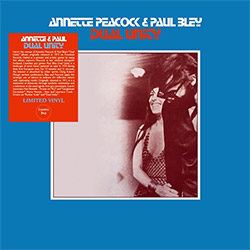
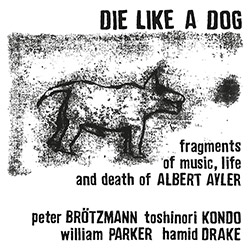
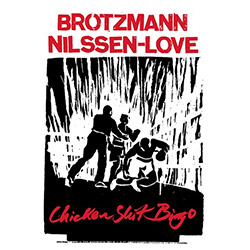

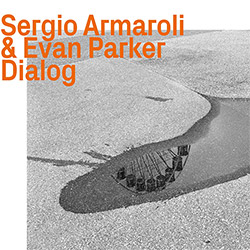
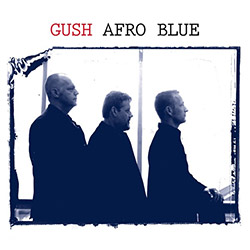
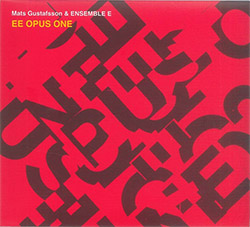


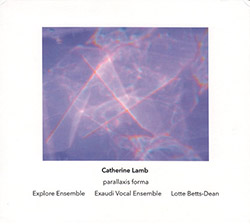

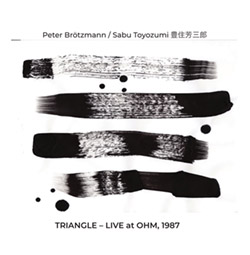
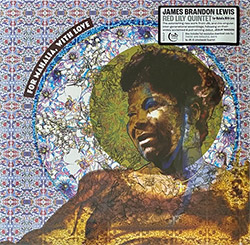
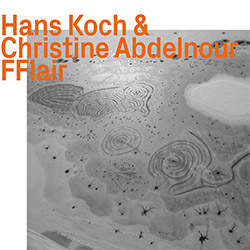

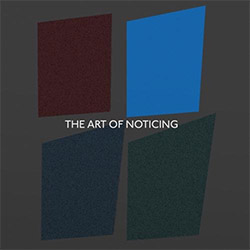
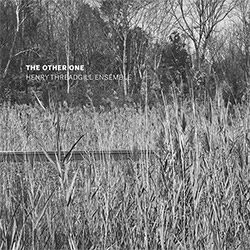


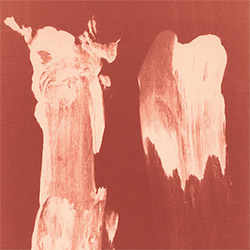


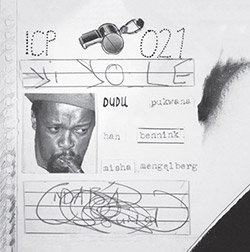
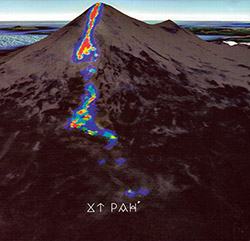












![Deupree, Jerome / Sylvie Courvoisier / Lester St. Louis / Joe Morris: Canyon [2 CDs]](https://www.teuthida.com/productImages/misc4/36404.jpg)


![Eternities: Rides Again [CASSETTE]](https://www.teuthida.com/productImages/misc4/36247.jpg)

![Lopez, Francisco: Untitled (2021-2022) [2 CDs]](https://www.teuthida.com/productImages/misc4/36438.jpg)




![Eventless Plot | Haarvol: The Subliminal Paths [CASSETTE + DOWNLOAD]](https://www.teuthida.com/productImages/misc4/36232.jpg)












![Eventless Plot | Francesco Covarino: Methexis [CASSETTE + DOWNLOAD]](https://www.teuthida.com/productImages/misc4/36231.jpg)



![Das B (Mazen Kerbaj / Mike Majkowski / Magda Mayas / Tony Buck): Love [VINYL]](https://www.teuthida.com/productImages/misc4/36329.jpg)


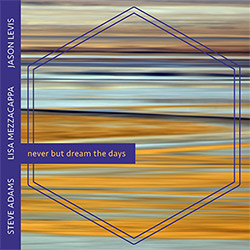
![Hemphill Stringtet, The: Plays the Music of Julius Hemphill [VINYL]](https://www.teuthida.com/productImages/misc4/36409.jpg)

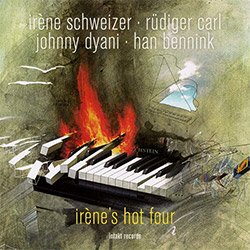

![Halvorson, Mary Septet: Illusionary Sea [2 LPS]](https://www.teuthida.com/productImages/misc4/17952.jpg)

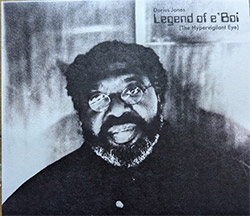




![Money : Money 2 [2 CDs]](https://www.teuthida.com/productImages/misc4/35894.jpg)




![Klinga, Erik: Elusive Shimmer [VINYL]](https://www.teuthida.com/productImages/misc4/36258.jpg)
![CHANGES TO blind (Phil Zampino): Volume 9 - I Wave on a Fine Vile Mist [CD + DOWNLOAD]](https://www.teuthida.com/productImages/misc4/36061.jpg)

![Wallmart / Rubbish: Asset Protection [split CD]](https://www.teuthida.com/productImages/misc4/35900.jpg)


![+Dog+: The Family Music Book Vol. 5 [2 CDs]](https://www.teuthida.com/productImages/misc4/35897.jpg)
![Kuvveti, Deli : Kuslar Soyledi [CASSETTE w/ DOWNLOAD]](https://www.teuthida.com/productImages/misc4/36107.jpg)

![Nakayama, Tetsuya: Edo Wan [CASSETTE w/ DOWNLOAD]](https://www.teuthida.com/productImages/misc4/36105.jpg)
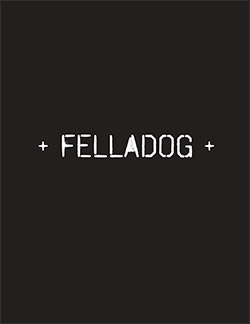
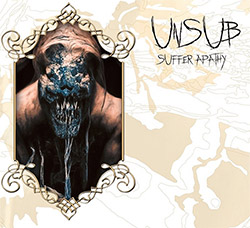


![Yiyuan, Liang / Li Daiguo: Sonic Talismans [VINYL]](https://www.teuthida.com/productImages/misc4/35957.jpg)
![Brown, Dan / Dan Reynolds: Live At The Grange Hall [unauthorized][CASSETTE]](https://www.teuthida.com/productImages/misc4/36245.jpg)








![Palestine, Charlemagne / Seppe Gebruers: Beyondddddd The Notessssss [VINYL]](https://www.teuthida.com/productImages/misc4/36206.jpg)
![Palestine, Charlemagne / Seppe Gebruers: Beyondddddd The Notessssss [NEON GREEN VINYL]](https://www.teuthida.com/productImages/misc4/36207.jpg)

![Laubrock, Ingrid: Purposing The Air [2 CDs]](https://www.teuthida.com/productImages/misc4/35639.jpg)

![Yoko, Ono / The Great Learning Orchestra: Selected Recordings From Grapefruit [2 CDs]](https://www.teuthida.com/productImages/misc4/35841.jpg)









![Zorn, John / JACK Quartet: The Complete String Quartets [2 CDs]](https://www.teuthida.com/productImages/misc4/35609.jpg)

![Lonsdale, Eden: Dawnings [2 CDs]](https://www.teuthida.com/productImages/misc4/35480.jpg)



![Sorry For Laughing (G. Whitlow / M. Bates / Dave-Id / E. Ka-Spel): Rain Flowers [2 CDS]](https://www.teuthida.com/productImages/misc4/35985.jpg)

![Rolando, Tommaso / Andy Moor : Biscotti [CASSETTE w/ DOWNLOADS]](https://www.teuthida.com/productImages/misc4/36106.jpg)


![Electric Bird Noise / Derek Roddy: 8-10-22 [CD EP]](https://www.teuthida.com/productImages/misc4/35970.jpg)








![Elephant9 : Mythical River [VINYL]](https://www.teuthida.com/productImages/misc4/34624.jpg)



![Elephant9 with Terje Rypdal: Catching Fire [VINYL 2 LPs]](https://www.teuthida.com/productImages/misc4/35355.jpg)
![Deerlady (Obomsawin, Mali / Magdalena Abrego): Greatest Hits [VINYL]](https://www.teuthida.com/productImages/misc4/34876.jpg)







![Surplus 1980: Illusion of Consistency [CD]](https://www.teuthida.com/productImages/misc4/35069.jpg)
![Staiano, Moe: Away Towards the Light [VINYL + DOWNLOAD]](https://www.teuthida.com/productImages/misc4/35037.jpg)
![Coley, Byron: Dating Tips for Touring Bands [VINYL]](https://www.teuthida.com/productImages/misc4/17906.jpg)

![Lost Kisses: My Life is Sad & Funny [DVD]](https://www.teuthida.com/productImages/misc4/lostKissesDVD.jpg)